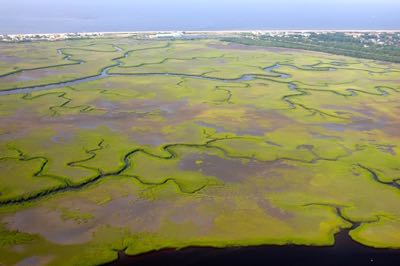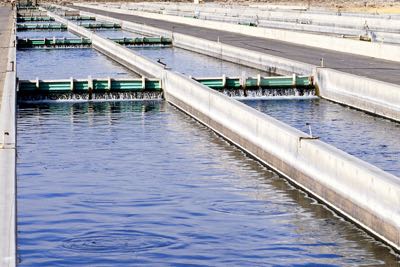5 expensive things wetlands do for free
For much of human history, wetlands were considered nuisance habitats that would better serve humanity if drained or filled. We now know that wetlands play a key ecological role and provide ecosystem services worth billions of dollars.
Don't see any images? Try refreshing this page!


Filter Water
Left: Wetlands are like kidneys, filtering pollution from runoff before it enters our waterways.
Right: Wastewater treatment plants serve a similar purpose but cost billions of dollars to build and operate.


Nurture Young Fishes
Left: Wetlands nurture the young of many commercially and recreationally important marine species.
Right: Hatcheries are expensive to run, and vulnerable to disease outbreaks and other effects of crowding.


Store Carbon
Left: Wetlands temper global warming by absorbing carbon dioxide from the air.
Right: Human efforts to capture and store carbon are costly, with unknown side-effects.


Minimize Flooding
Left: Wetlands soak up excess rainfall, slow runoff, and reduce hurricane storm surge.
Right: Levees cost millions of dollars per mile and encourage flood-plain development. Their sudden failure can lead to catastrophe.


Control Erosion
Left: Coastal wetlands protect shorelines from scour by waves.
Right: Bulkheads are costly and can actually worsen the erosion they are meant to control.

